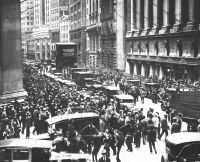Related Topics
Medical reform Subjects (1)
New topic 2019-05-24 20:49:32 description
Perpetual Fire Insurance
Many of the a older houses in Philadelphia still have Plaques to the front wall, usually between two windows on the second story. These are the symbols of colonial fire companies, signifying that this particular house had paid its dues to a particular company and was entitled to its services if it ever had a fire. There are two exceptions to this rule, one showing four hands gripping wrists (the fireman's "carry" technique), which was the symbol of Franklin's fire insurance company, otherwise known as the "Contributionship". The other shows a Green Tree, the symbol of a competitor fire insurance company which found a business opportunity in ensuring houses with a tree on the property, something the Contributionship declined to cover. These fire insurance companies are the only survivors of a type called "perpetual" fire insurance. Since the Contributionship is the oldest fire company in America, while the Green Tree company was fairly recently involved a controversy with its directors some of the most prominent people in the City they generate highly interesting histories, as organizations.
But in many ways, the more interesting feature about them is their unique business plan, which contains some important lessons for the rest of the insurance industry, particularly health insurance. Since health insurance is now one of the great unsolved problems of national life, it is perhaps worth a little trouble to understand perpetual insurance as a concept. It isn't that hard, so stick with it.
A fire insurance company has to figure out each year's risk of fires and set a premium large enough to pay for that risk, but not so large as to drive away business. If there's some unspent money left over at the end of the year, that profit belongs to the company. When Ben Franklin was starting the first fire insurance, he had no way of guessing what the risk was going to be, so he guessed far on the high side. So as to keep from scaring away his customers, the agreement was that any surplus would be applied to the following years, invested in the meantime. After a while, the investment income was enough to pay for the fires, plus enough to pay a dividend and to return the whole investment if the home-owner wanted to move to another house. Here was perpetual fire insurance. A returnable, lump-sum investment paid for the fire insurance, paid a nice dividend, and you got your money back if you wanted it. Its most extreme example was the policy taken out by thePennsylvania Hospital during colonial times, which still pays about 15,000 annual dividend, plus they have had fire insurance for two centuries from an investment which seems trivial in retrospect. Why doesn't everyone have perpetual fire insurance? Why is it now a quaint little forgotten idea that almost no one knows about?

|
| the 1929 crash |
There are conspiracy theories, of course, that greedy insurance companies prefer to sell you a more expensive product that is more profitable for them; forget that line of argument. A more plausible criticism is that the managers of perpetual insurance have to take a long-term view of risk. The perpetual companies are reluctant to insure a house that has any significant chance of having a fire, ever. Philadelphia long ago prohibited wooden structures, however, and the building codes have become progressively more strict. Another source of customer reluctance grew out of the 1929 crash, which destroyed for generations the confidence of the public, and for that matter the board of directors, in the safety of long term investments. If the investments become too timid, they will generate a reduced return, and inflation of the cost of replacing a burned-down building may slowly pull ahead of the investment income which is supposed to cover it. The tax laws will inevitably change over a period of time which describes itself as perpetual, and somehow or other the investment safety may become impaired by politics.
A more subtle risk is inherent in the nature of building materials. If you have a stone house, you expect to have your fire insurance restore you to a stone house. But houses were built of the stone when a stone was locally abundant, and cheap. Nowadays, it gets harder and more expensive to find and transport suitable stone, and much harder to find a skilled stone mason. One of the reasons you hire an architect is to direct you to the newer, more modern materials and techniques, and away from obsolete, expensive materials of the past. In summary, therefore, the managers of the company must establish a set of predictions about the perpetual risk of your house burning down, and the perpetual cost of replacing it. If they guess too low, the money you invested will eventually run out, and you will be left with a perpetual promise, but no money in the treasury to pay for it. All of this woeful, fearful whimpering, however, must be set against a two hundred year history of a simply glorious investment opportunity. You have to trust your company to be smart and, to be honest. Who trusts anyone, any more?
Originally published: Friday, June 23, 2006; most-recently modified: Friday, May 31, 2019